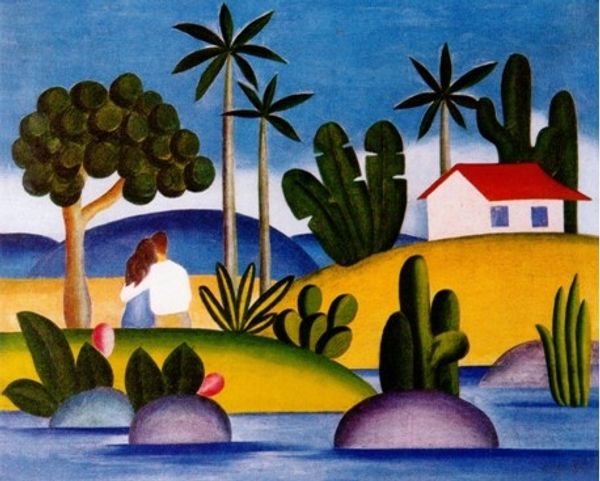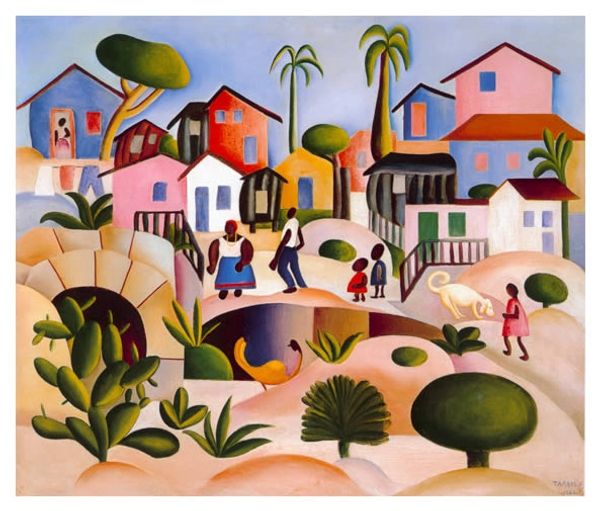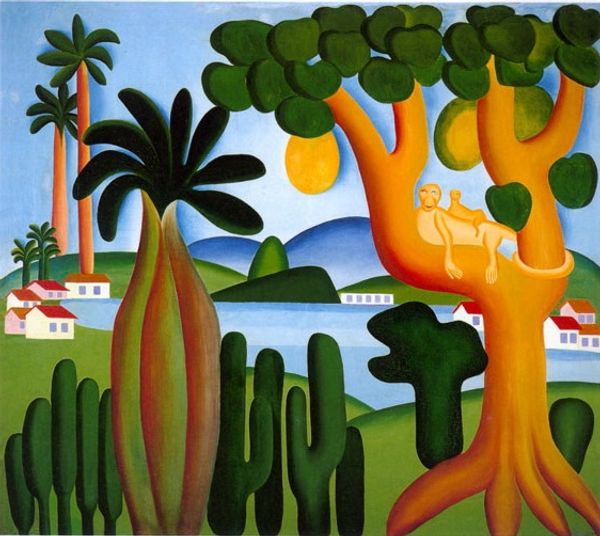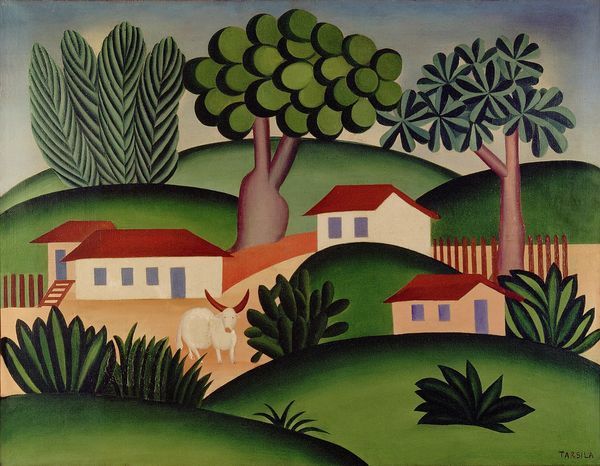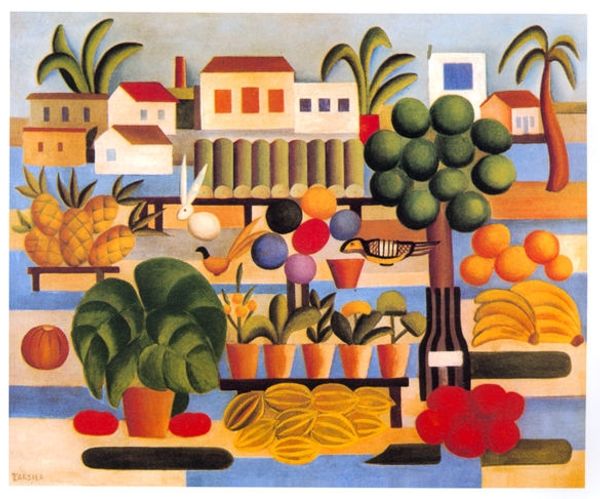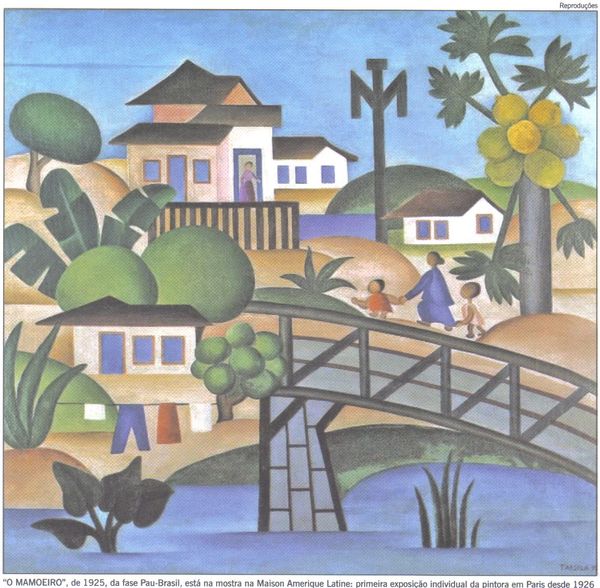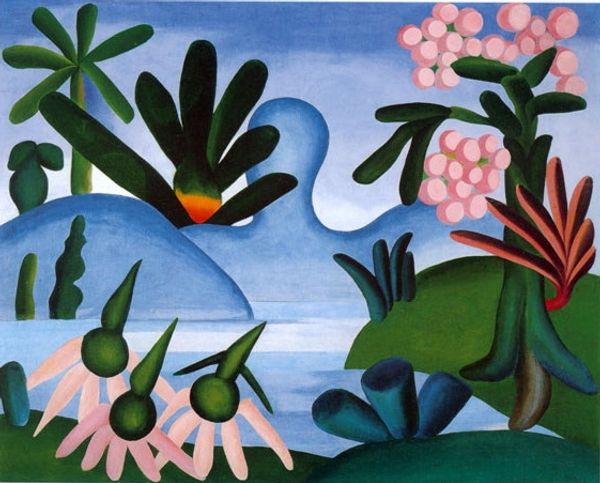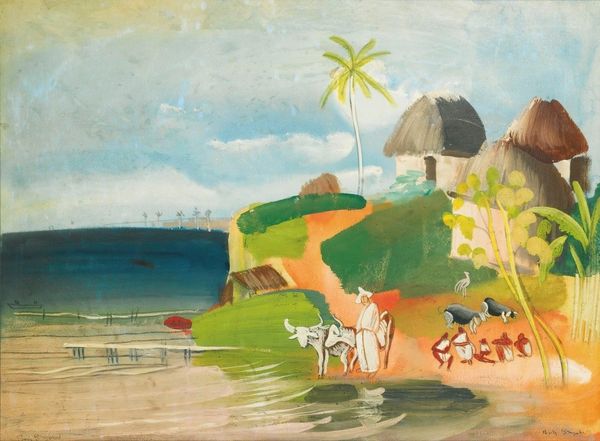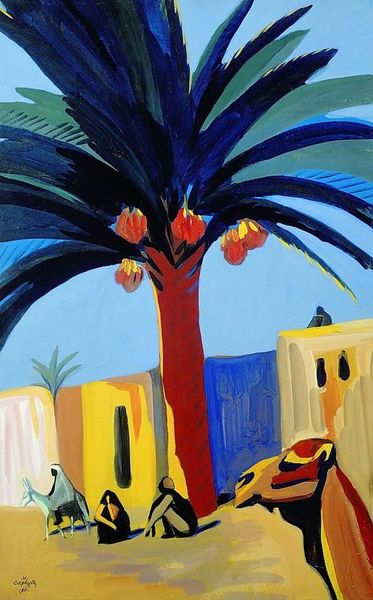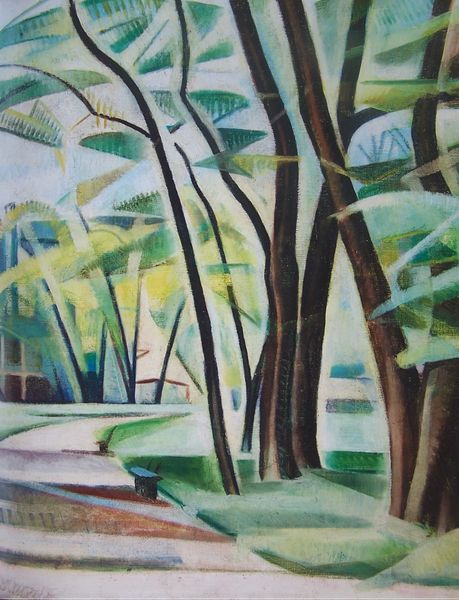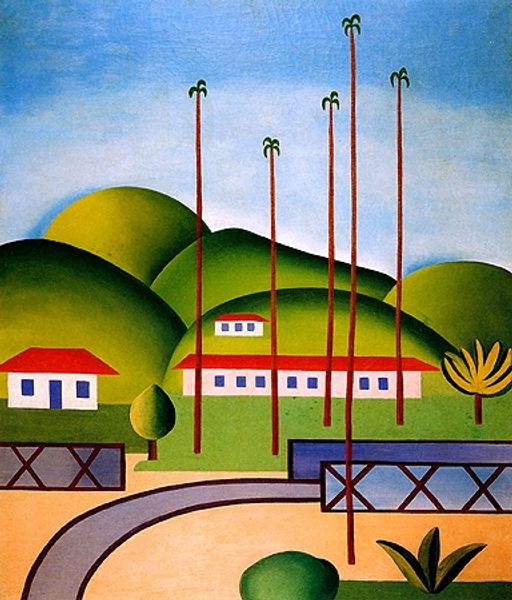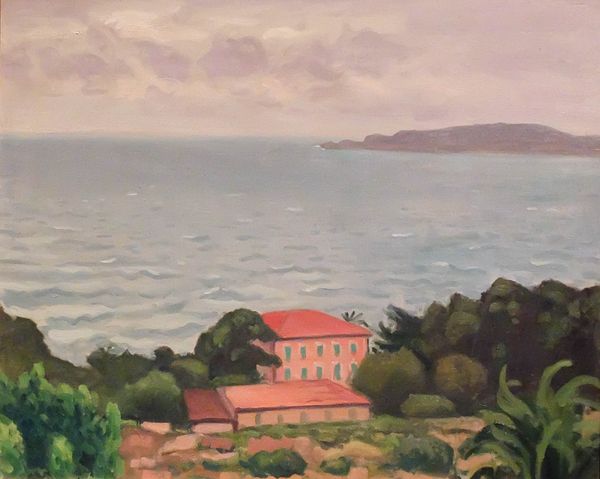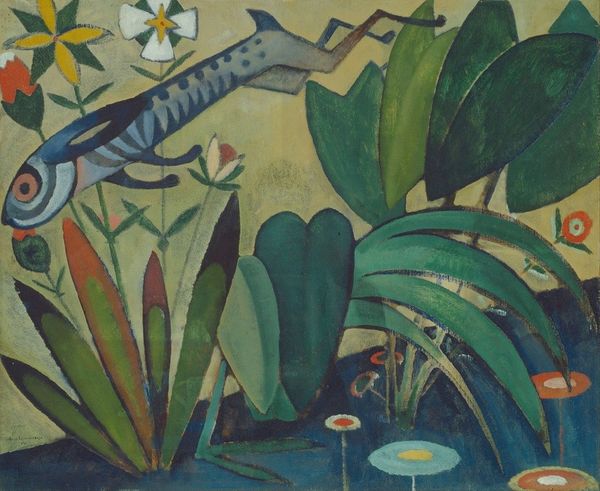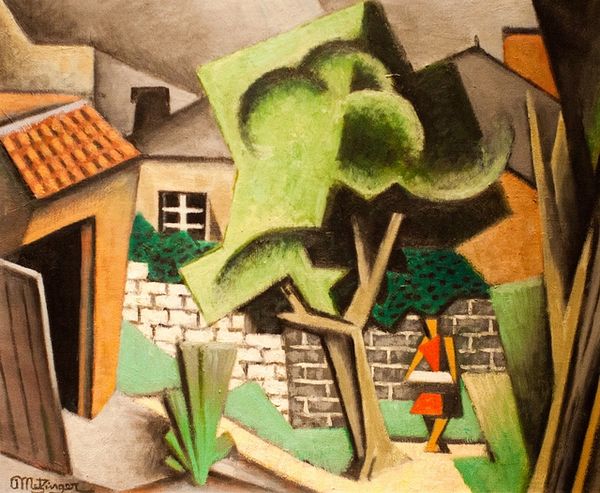
painting
#
tropical
#
painting
#
landscape
#
figuration
#
plant
#
modernism
Dimensions: 66 x 75 cm
Copyright: Tarsila do Amaral,Fair Use
Curator: Tarsila do Amaral's "An Angler," painted in 1925, offers a window into her unique Brazilian modernist vision. It’s currently housed here in the Hermitage Museum. Editor: It strikes me immediately as serene, almost dreamlike. The shapes are simplified, rounded, the colors muted and harmonious, all lending a tranquil atmosphere to the entire painting. Curator: Indeed. This serenity belies a complex negotiation of Brazilian identity. During that period, there was significant cultural introspection, the need to define Brazil against colonial influences. The lone angler embodies a romanticized, perhaps idealized, relationship between the population and the land. The subject's race is ambiguously presented as a silent figure of exploited indigenous labor, perhaps? Editor: From a formal standpoint, notice the repetition of circular forms. The hills, the foliage, even the rocks in the river, echo one another, creating a sense of unity. The geometry is so smooth, almost cartoonish in the visual arrangement of colors, buildings, hills and flora. What do you think that signifies? Curator: Amaral's style incorporated both international modernism and uniquely Brazilian elements. In 1924, she visited European studios of artists such as Fernand Leger. On her return to Brazil, these influences commingled with local aesthetics to offer the "anthropophagic" project of devouring European styles to create a uniquely Brazilian art. Editor: That gives so much significance to all of this visual flattening! It appears to bring elements into an equivalent dialogue with each other, just on a visual level! The reduction to basic forms creates a language that transcends literal representation. It’s a painting speaking about painting! Curator: Yes, and that ties back into what I think is an underlying commentary on indigenous populations' place within this modernist framework. Is this just another way of consuming local cultural production? Or is it, in fact, about recognizing the true essence of a country whose own history predates European arrival? Editor: Fascinating how the seemingly simple forms open up such rich and potentially conflicted readings of national identity. Curator: Exactly, its placid surface veils layers of cultural and historical discourse. Editor: Leaving us with a more enriched appreciation of the artistry behind it, wouldn't you agree?
Comments
No comments
Be the first to comment and join the conversation on the ultimate creative platform.
